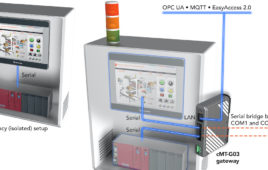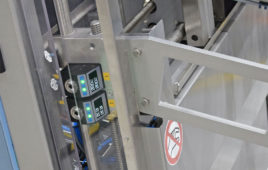 An ultra-sensitive biosensor made from the wonder material graphene has been used to detect molecules that indicate an increased risk of developing cancer.
An ultra-sensitive biosensor made from the wonder material graphene has been used to detect molecules that indicate an increased risk of developing cancer.
The biosensor has been shown to be more than five times more sensitive than bioassay tests currently in use, and was able to provide results in a matter of minutes, opening up the possibility of a rapid, point-of-care diagnostic tool for patients.
The biosensor has been presented today, 19 September, in IOP Publishing’s journal 2D Materials.
To develop a viable bionsensor, the researchers, from the University of Swansea, had to create patterned graphene devices using a large substrate area, which was not possible using the traditional exfoliation technique where layers of graphene are stripped from graphite.
Instead, they grew graphene onto a silicon carbide substrate under extremely high temperatures and low pressure to form the basis of the biosensor. The researchers then patterned graphene devices, using semiconductor processing techniques, before attaching a number of bioreceptor molecules to the graphene devices. These receptors were able to bind to, or target, a specific molecule present in blood, saliva or urine.
The molecule, 8-hydroxydeoxyguanosine (8-OHdG), is produced when DNA is damaged and, in elevated levels, has been linked to an increased risk of developing several cancers. However, 8-OHdG is typically present at very low concentrations in urine, so is very difficult to detect using conventional detection assays, known as enzyme-linked immunobsorbant assays (ELISAs).
In their study, the researchers used x-ray photoelectron spectroscopy and Raman spectroscopy to confirm that the bioreceptor molecules had attached to the graphene biosensor once fabricated, and then exposed the biosensor to a range of concentrations of 8-OHdG.
When 8-OHdG attached to the bioreceptor molecules on the sensor, there was a notable difference in the graphene channel resistance, which the researchers were able to record.
Results showed that the graphene sensor was capable of detecting 8-OHdG concentrations as low as 0.1 ng mL-1, which is almost five times more sensitive compared with ELISAs. The graphene biosensor was also considerably faster at detecting the target molecules, completing the analysis in a matter of minutes.
Moving forward, the researchers highlight the potential of the biosensor to diagnose and monitor a whole range of diseases as it is quite simple to substitute the specific receptor molecules on the graphene surface.
Co-author of the study Dr Owen Guy said: “Graphene has superb electronic transport properties and has an intrinsically high surface-to-volume ratio, which make it an ideal material for fabricating biosensors.
Now that we’ve created the first proof-of-concept biosensor using epitaxial graphene, we will look to investigate a range of different biomarkers associated with different diseases and conditions, as well as detecting a number of different biomarkers on the same chip.”
For more information visit http://www.iop.org.
Filed Under: M2M (machine to machine)




